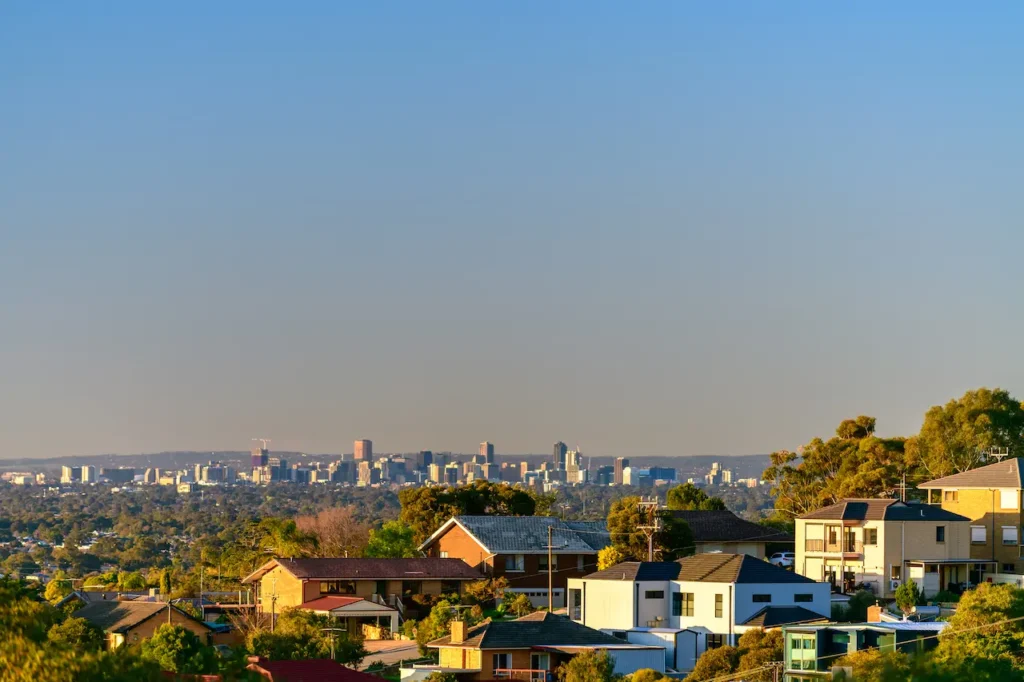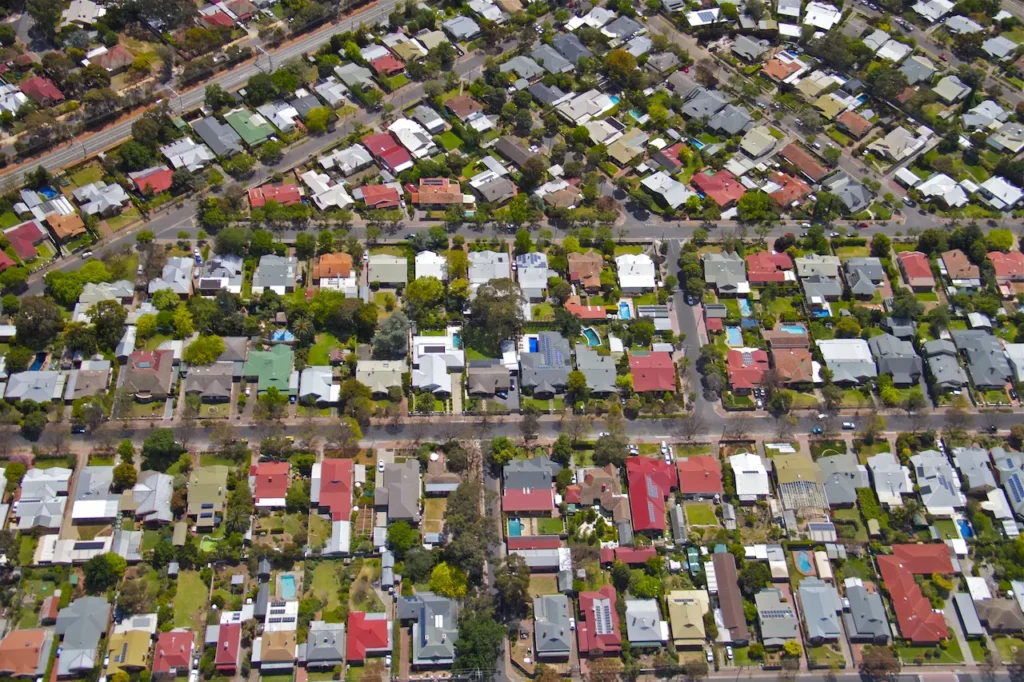Adelaide Housing Market: Reaching a Turning Point
Introduction
At RiskWise Property, our dedicated team is committed to delivering critical insights into the housing and investment markets. Recent data indicates that Adelaide’s housing market has reached a significant milestone, with dwelling prices stabilizing and showing signs of recovery. As buyer confidence rises alongside improved auction clearance rates, our latest Risks & Opportunities Report provides a comprehensive analysis of the current landscape and future prospects for Adelaide property prices. Led by CEO Doron Peleg, we examine the intricate dynamics at play and the implications for investors and homeowners alike.

The Current State of Adelaide’s Housing Market
Evidence of Price Stabilization
Adelaide’s housing market has recently demonstrated encouraging signs of stabilization. According to our research, dwelling prices appear to have reached their bottom, as evidenced by increasing buyer confidence and auction clearance rates. The housing finance sector in South Australia has also shown improvement, with an 8.6 percent increase since February 2019, recovering from previous declines. This uptick in housing finance signals a renewed interest in property ownership, suggesting that potential buyers are gaining confidence in the market’s resilience.
Labor Market and Economic Conditions
While the labor market has seen some improvements, the effective unemployment rate in South Australia remains elevated, at over 9 percent. This high unemployment rate, combined with modest population growth of just 0.8 percent per annum, creates ongoing challenges for housing demand. Doron Peleg emphasizes the connection between these economic factors and the demand for dwellings, highlighting the delicate balance between improving serviceability measures due to interest rate cuts and the risks posed by potential credit defaults.
Despite these challenges, the gradual improvement in employment opportunities, particularly in sectors like healthcare and technology, provides a glimmer of hope for the Adelaide economy. As more residents secure stable employment, there may be a subsequent increase in housing demand, particularly for homes that cater to young families and professionals.
Regional Variations in Demand
Despite the overarching challenges, specific areas within Adelaide are witnessing signs of recovery. High-demand locations, particularly those close to the CBD, are beginning to show steady price growth, contrasting with less popular areas that continue to struggle. For instance, CoreLogic data indicates that the median house price in regions like the Barossa – Yorke – Mid North has experienced a slight decline, underscoring the importance of localized market dynamics.
Understanding these regional variations is critical for investors and buyers alike. Areas with strong amenities, access to public transport, and proximity to employment hubs are more likely to experience positive capital growth. Conversely, regions that lack these features may see stagnant or declining prices, reinforcing the need for strategic investment decisions.
Factors Influencing Adelaide’s Market Recovery
Infrastructure and Economic Growth
Adelaide benefits from substantial public and private expenditure, yet the short-term economic growth is projected to remain relatively low, hovering around 2 percent. This limited growth is expected to affect demand for housing in the short to medium term. However, ongoing infrastructure projects, such as improvements to public transport and urban development initiatives, could pave the way for more robust long-term economic stability.
Investment in infrastructure is particularly important, as it not only creates jobs but also enhances the livability of neighborhoods. Areas undergoing significant development are often more appealing to buyers, driving demand and subsequently supporting property prices. For example, upcoming infrastructure projects aimed at improving connectivity and public facilities are likely to attract both residents and investors, further solidifying Adelaide’s position as a competitive housing market.
The Role of Interest Rates
Interest rate trends play a crucial role in shaping the housing market. The Reserve Bank of Australia’s current rate stands at 4.35 percent, a stark contrast to the historically low rate of 0.1 percent experienced until May 2022. While stability in interest rates is anticipated moving forward, the high rate environment continues to exert pressure on buyers, impacting their purchasing power and overall market dynamics.
As buyers navigate this environment, many are reevaluating their budgets and considering alternative financing options. The increase in interest rates has led to a surge in demand for fixed-rate loans as buyers seek predictability in their mortgage repayments. This shift in borrower preferences may influence the types of properties that gain traction in the market, with more buyers gravitating toward affordable housing options that fit within their revised financial parameters.
Unit Market Performance
The unit market in Adelaide presents a mixed picture. Although units held firm during the national downturn, their long-term outlook remains uncertain due to low demand among owner-occupiers and challenges related to oversupply. Areas like Adelaide Central and Hills face significant unit oversupply, which has contributed to price declines in recent months. Despite this, the overall rental market remains healthy, providing solid returns for both houses and units.
Investors seeking opportunities in the unit market should exercise caution, focusing on areas with strong rental demand and future development potential. Understanding the factors driving rental returns, such as proximity to amenities and transport links, can help investors make informed decisions about where to allocate their resources. Additionally, as remote work becomes more normalized, some suburbs may see increased interest from buyers seeking larger living spaces at affordable prices, creating new opportunities in previously overlooked areas.

Future Prospects for Adelaide Property Prices
Short-Term and Long-Term Growth Projections
As the Adelaide property market transitions from its pandemic lows, economists project varying degrees of growth in the coming years. NAB’s forecast indicates strong gains of 16.8 percent in 2024, followed by an additional 8.3 percent in 2025. In contrast, Westpac suggests a more conservative growth estimate of 12 percent for 2024 and 3 percent for 2025. These predictions underscore the significance of supply and demand dynamics, which will largely dictate future market performance.
As we look ahead, the ongoing evaluation of economic indicators, buyer sentiment, and housing supply will be essential in shaping these forecasts. The performance of the Adelaide property market will depend not only on local conditions but also on broader national trends, such as changes in interest rates and government policy shifts related to housing affordability and investment.
The Importance of Buyer Demand
The upward trend in buyer demand is evident, with total sales in the 12 months leading up to September 2024 up by 16.6 percent year-on-year. Additionally, new listings have decreased by 1.6 percent, contributing to a tighter supply landscape. As a result, Adelaide is experiencing a resilient market, with days on market (DOM) holding steady at around 26 days, further indicating strong seller performance.
This increasing buyer demand is encouraging for the market, as it suggests that prospective homeowners and investors are willing to commit to purchases despite the economic challenges. As confidence in the market builds, sellers may also feel more empowered to list their properties, creating a more dynamic and fluid marketplace.
Key Suburbs for Investment
Investors and first-time buyers looking for opportunities in Adelaide should focus on suburbs with favorable growth potential. Areas near the CBD, such as Adelaide Central and the Hills, are expected to yield better capital growth compared to regions lacking strong growth drivers. While the unit market faces challenges, certain locations are still presenting attractive investment prospects, particularly given the ongoing rental demand.
Emerging suburbs with planned infrastructure upgrades and growing amenities are also worth considering. For example, neighborhoods experiencing gentrification often attract young professionals and families seeking vibrant communities, thereby increasing demand for housing. Identifying these trends early can position investors to capitalize on growth before prices escalate.
The Role of Government Policy
Housing Affordability Initiatives
Government policies play a crucial role in shaping the housing market, particularly in terms of affordability and accessibility for first-time buyers. Recent initiatives aimed at enhancing housing affordability, such as grants for first home buyers and incentives for new construction, could further stimulate demand. These policies are essential for addressing the challenges faced by many potential homeowners who are struggling to enter the market.
Moreover, the government’s commitment to increasing housing supply through various means, including zoning reforms and expedited planning approvals, will be key to balancing supply and demand. By facilitating more housing development, particularly in high-demand areas, policymakers can help alleviate some of the pressures on the market.
Investment in Infrastructure
Infrastructure investment remains a focal point for government strategy, as it directly influences economic growth and housing demand. The ongoing development of transportation networks, schools, and healthcare facilities not only enhances the attractiveness of specific suburbs but also plays a critical role in driving population growth. Areas that benefit from robust infrastructure investments are likely to see an increase in property values as demand for housing in those regions rises.
Local governments are increasingly aware of the importance of strategic planning to accommodate future growth. Engaging with communities to identify needs and priorities will ensure that infrastructure development aligns with residential demand, leading to more sustainable growth patterns in the long term.

The Impact of Demographics on Housing Demand
Changing Population Dynamics
Adelaide’s demographic trends are also influencing the housing market. With a growing population of young professionals and families seeking affordable housing options, the demand for specific types of properties is evolving. This demographic shift creates opportunities for investors who can recognize and respond to the changing preferences of buyers.
As remote work becomes more prevalent, some individuals may prioritize larger living spaces in suburban areas, leading to increased demand for family homes. This trend is likely to reshape the market landscape, driving up prices in regions that offer desirable living conditions while potentially stabilizing or reducing demand in more urban areas.
The Influence of Migration
Migration patterns, both domestic and international, are another critical factor shaping Adelaide’s housing market. The return of international travelers and skilled migrants, coupled with an influx of interstate residents seeking affordable housing, could provide a much-needed boost to demand. This is particularly relevant as South Australia positions itself as an attractive destination for those looking to escape the more expensive housing markets of Sydney and Melbourne.
Investment in marketing and promotional campaigns to attract new residents will be vital. As more people move to Adelaide, the competition for housing will likely increase, further driving demand and potentially pushing property values higher.
Conclusion
In conclusion, the Adelaide housing market is at a critical juncture, with recent data suggesting that dwelling prices have reached
their bottom and are beginning to show signs of recovery. While challenges remain, including high unemployment rates and economic growth projections, the overall sentiment in the market is shifting positively.
At RiskWise Property, we remain committed to investigating the nuances of the housing market and delivering timely insights to our clients and stakeholders. Our comprehensive analysis provides a roadmap for understanding the complexities of the Adelaide property landscape, empowering investors, buyers, and homeowners to make informed decisions.
As the market evolves, it is crucial for all participants to stay abreast of emerging trends, economic indicators, and government policies that will shape the future of property prices in Adelaide. With the right strategies and insights, stakeholders can navigate the complexities of this dynamic market and position themselves for success in the years to come. Whether you are a first-time buyer, a seasoned investor, or a homeowner looking to sell, understanding these dynamics will be essential for thriving in Adelaide’s housing landscape.

